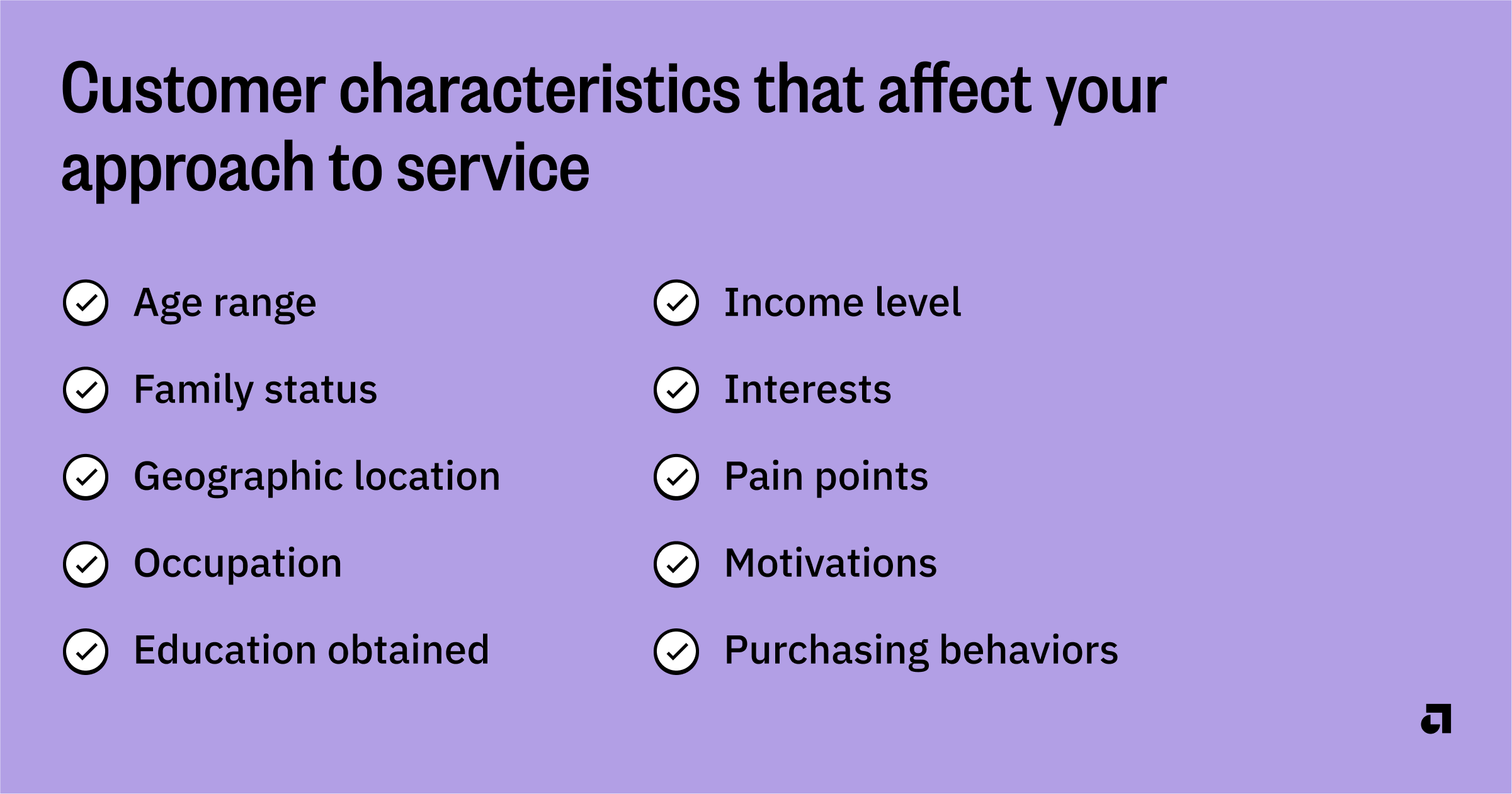Why every support team needs a customer-centric culture (and how to create one)

Running a successful support team is really about maximizing and adding together three key components: systems + processes + people. If you’ve already dipped your toes into the workforce management pool, you’re probably focused heavily on the first two. After all, making sure you have the right tools and well-documented ways of doing work makes scheduling, forecasting, and analyzing performance far easier.
But just because you know you can count on your agents (the people part of the equation) to do their best every day doesn’t mean performance improvement will take care of itself. This is especially true when you consider that customer expectations continue to rise — Zendesk’s CX Trends 2022 report shows that more than 60% of customers have higher customer service expectations than they did a year ago.
What’s the solution? Taking a proactive approach to building and maintaining a customer-centric culture. So, prepare for a primer in customer centricity and what it takes to ensure this mindset becomes central to everything your team does.
What is customer centricity and what does it look like in the support space?
First things first, let’s explore what exactly a customer-centric mindset is. According to Gartner, customer centricity requires that the customer be the focal point of everything an organization does to enhance customer satisfaction, loyalty, and advocacy. From an organization’s perspective, that means deeply understanding the perceptions, circumstances, and expectations of their consumers to meet their needs at every touchpoint.
Say, for instance, your customers are largely middle-aged individuals who have full-time jobs as well as families. You know they’re often most available late in the evening and that they have a preference for live chat since it allows for real-time help but doesn’t require them to speak over the phone. For you, a customer-centric approach involves going beyond ensuring that live chat is adequately staffed for those hours. Agents should be trained to be sensitive to parents’ needs, and have options for following up that are convenient and accessible.
It isn’t always easy to determine whether an organization is customer centric or merely aspires to be. Here are a few examples Gartner highlights of behaviors that indicate a company is committed to maintaining a customer-centric culture:
- Prioritizing lasting customer satisfaction and loyalty as much as short-term profit goals
- Rewarding and promoting employees who improve customer experiences as often as those who achieve company-centric results
- Seeking to truly improve customer feedback rather than simply trying to outperform competitors
- Removing barriers that prevent employees from delivering customer-centric experiences
Increasingly, the conversation has been shifting from customer centricity to customer obsession. As HubSpot explains, some organizations have truly gone above and beyond to make sure their customers are consistently delighted.
At Assembled, this mindset has been in place from the beginning. One of our core values is “Get on the plane,” meaning that it’s important to get on board and do what it takes. Why such funny phrasing? The value stems back from years ago when a few Assembled team members literally hopped on a plane to make sure a customer had everything they needed to be successful. It really was about going above and beyond.
Why a customer-centric model is critical for today’s support teams
It’s clear that customer centricity, if not outright customer obsession, is a high priority for today’s support teams. There are plenty of reasons why. For starters, consider how fierce competition is in today’s market. Customers have many choices, for just about everything, and there are many ways to uncover all sorts of information about a company — social media comments, online reviews, etc. So, companies need to provide truly exceptional experiences to ensure they stand out from the pack.
While it can feel impossible to differentiate your organization in a meaningful way, research from KPMG makes it clear that demonstrating integrity and offering a high degree of personalization are both critical for driving customer advocacy and loyalty.
Exceeding — or at least meeting — customers’ expectations really can play out in how they make purchasing decisions. Consider these global statistics from Zendesk’s CX Trends 2022 report:
- 81% of customers say they are more likely to make another purchase after a good service experience
- 74% of customers will forgive an organization for a mistake if they receive exceptional service
- 90% of customers will spend more with companies that offer personalized experiences
- 93% of customers will spend more with companies that offer their preferred channel of engagement for support
Need further proof of the value of maintaining a customer-centric culture? Recent research from Forrester suggests that investing in customer obsession will yield a 700% ROI at minimum over the course of 12 years. Additionally, another Forrester report reveals that customer-obsessed companies have 2.5 times higher revenue growth and 2.2 times higher customer retention and employee engagement than companies that aren’t customer obsessed.
Whether you call it customer centricity or customer obsession, the takeaway is that putting customers at the center of everything your support team does will pay off tenfold.
What it takes to establish a customer-centric culture
Whether your support operation is full of seasoned pros or you’re just building out your team, it’s important that everyone has a customer-centric mindset. Here are five steps you can take to achieve that objective:
1. Get to know your customers on a deeper level
To get started, it’s important to spend plenty of time digging into information about your customers. You obviously need to know who they are before you can put them at the center of your support team’s approach to service. As you research, make sure to focus on some defining characteristics to develop your customer profiles:
- Age range
- Family status
- Geographic location
- Occupation
- Education obtained
- Income level
- Interests
- Pain points
- Motivations
- Purchasing behaviors

Next, consider creating a customer journey map. This is most commonly done in marketing, but it’s an excellent exercise for anyone who’s involved in communicating with customers, whether directly or indirectly. HubSpot has some templates that can help you get started.
A customer journey map helps you understand the steps your customers go through before they connect with your support team, which provides invaluable context. Knowing where support team interactions fall in the grand scheme can help you identify moments that provide opportunities to improve the customer experience.
2. Incorporate a customer-centric mindset into employee onboarding and training
With a clear understanding of exactly who your customers are and how they typically interact with your organization, you can turn your attention toward educating agents. You’ll want to include information about customers and best practices for communicating with them in your training materials, which is easier if you take a step back to consider which elements contribute to an exceptional customer experience. The KPMG report focuses on six main pillars that can help shape your thinking:
Integrity — Every organization has principles and those matter to customers. Behaving in ways that clearly demonstrate a commitment to certain values helps to build trust and elevate your reputation.
Empathy — Nothing is more frustrating to customers than interacting with an organization that simply doesn’t care about them. They want to feel heard, understood, and cared for. Companies that are able to put themselves in customers’ shoes will stand out from the pack.
Personalization — Technology has made it possible for organizations to offer experiences that are tailored to each and every customer. But tech alone isn’t enough, which is where your support team comes in. Your agents are able to offer a unique, human touch that can really make a difference to customers.
Resolution — Anyone who works in customer support knows that issues can arise long after a customer makes a purchase. Some buyers end up with faulty products while others may need some education on how to use their new purchase. Organizations that are committed to resolving problems all throughout their customers’ lives are the ones that are truly customer centric.
Expectations — We already mentioned that customers have higher expectations than ever before, but it’s worth repeating. Keeping tabs on what customers want from your company’s products, services, and experiences — which you can collect through customer satisfaction (CSAT) surveys — is critical for keeping pace with ever-rising expectations.
Time and effort — Connecting with an organization to receive support needs to be simple and intuitive. Otherwise, customers will take their business elsewhere. Making communication quick and easy for customers helps to support retention and loyalty.
Documenting best practices related to the above pillars for new team members to read through is a great start, but we also recommend following up with a few drills or quiz questions to help them better retain that information. It’s also a great idea to incorporate roleplaying into new agent onboarding to help them get the hang of maintaining a customer-centric mindset, even during inherently difficult interactions.
Incorporating these recommendations into training for existing agents is also a good idea, particularly if they’re new to your existing team members. In fact, it’s a great way to refine your QA program and help your agents continue to develop their skills. Even seasoned agents stand to learn something new as you work to refine best practices over time.
3. Ask for customer feedback — and act on it
Support teams need to make some assumptions about customers and their preferences when starting out. But once your department is a bit more established, seize the opportunity to collect customer feedback whenever you can. They won’t hesitate to share ideas for improvement, and you’d be surprised at how insightful customer suggestions can be.
As for how to solicit customer feedback, you have several options. Some teams simply collect reviews by asking customers to rate them on a scale of 1 to 10 before ending a call. Depending on which tools your support team uses, you may have access to more sophisticated methods such as automated surveys that deploy via email or text after every interaction or even sentiment analysis that can interpret a customer’s mood during a phone conversation.
You can even consider a few different types of surveys to gather feedback. The most common are quick, simple surveys that merely ask for a rating. These include CSAT and Net Promoter Scores (NPS). That said, there’s nothing stopping you from distributing short-answer surveys that ask for specifics about customers’ experiences.
One thing to keep in mind is that collecting feedback from customers is only useful if you act on it. Consider, for example, that 15% of your customers have all said they wish that you offered live chat later into the evening when they actually have time to reach out to customer support. That’s a pretty clear indication that extending your live chat hours — and staffing accordingly, of course — should be on the horizon.
Ultimately, collecting and addressing customer feedback will support retention. That benefits the entire organization because attracting a new customer can be anywhere from five to 25 times more expensive than retaining an existing customer.

4. Continually evaluate metrics to identify ways to improve
Collecting and monitoring CSAT and NPS scores can help you stay in touch with customers’ perceptions of your organization, but don’t stop there. There are many other customer service metrics that all reveal something about the experiences your team is providing. Here are some other metrics to consider collecting on a regular basis:
- Abandon rate
- Adherence
- Average handle time
- Average speed of answer
- Cases solved
- First contact resolution
Monitoring metrics can highlight needed improvements, but it can also reveal unexpected opportunities. Consider average handle time.
Let’s say one of your agents has recently seen an uptick in their average handle time. While your initial reaction might be to coach them to more swiftly sign off with customers, that might not be the most appropriate course of action. Perhaps conversations have grown lengthier because this particular agent has been navigating some of the most complex issues of anyone on your team. In this case, you might actually want to have them specialize in complex cases while others focus on simpler interactions.
No matter what your metrics reveal, you can use them to inform actions that help to bolster your customer-centric culture.
5. Give your customer-centric culture staying power
What’s more powerful than having a customer-centric support team? Having a customer-centric organization. To that end, make sure to collaborate with other departments. Share what you’ve learned with them and don’t be shy about asking for what they’ve learned. Your sales and marketing teams have undoubtedly picked up on customer preferences and behaviors that your support team hasn’t encountered.
Informal conversations can be a great way to get the ball rolling, but to ensure your organization is down the path toward customer obsession, official documentation is the way to go. Meet with leadership from across the entire organization to define your customer-centric goals, align on the behaviors and mindsets every employee should exemplify, write them down, then store them somewhere that anyone can access whenever they want.
Creating an official document that explains your customer-centric mindset and goals can be a bit intimidating. After all, it’s something that everyone will (or at least should!) use throughout their time at your organization. While there are no real rules for how it should take shape, consider using the “front-page test.” 📰
All this means is that should your company-centric culture document become the top story on newspapers and online publications, you wouldn’t be the least bit embarrassed about it becoming worldwide news. If you’d be proud, then you’ve passed the front-page test with flying colors.
Build a best-in-class company culture
There’s no denying that establishing a customer-centric culture takes a fair bit of preliminary work. Once you lay the foundation, though, you’ll be amazed at how anticipating customers’ needs will become second nature to your agents. They’ll be able to deliver more empathetic, personalized experiences than ever before and ultimately provide incredible value to the organization as a whole.
Because having a team of exceptional agents is so critical to maintaining success in the long term, it’s important to do what you can to keep them motivated and engaged whenever possible. Here are a few questions you might consider:
- Are you regularly recognizing team members for a job well done?
- Are you prioritizing work-life balance to help agents avoid burnout?
- Are there ways in which you could help team members develop within their careers?
If you recognize that there might be room to further engage your team, Assembled is here to help 👋 . Discover these 7 ways to boost employee morale.




